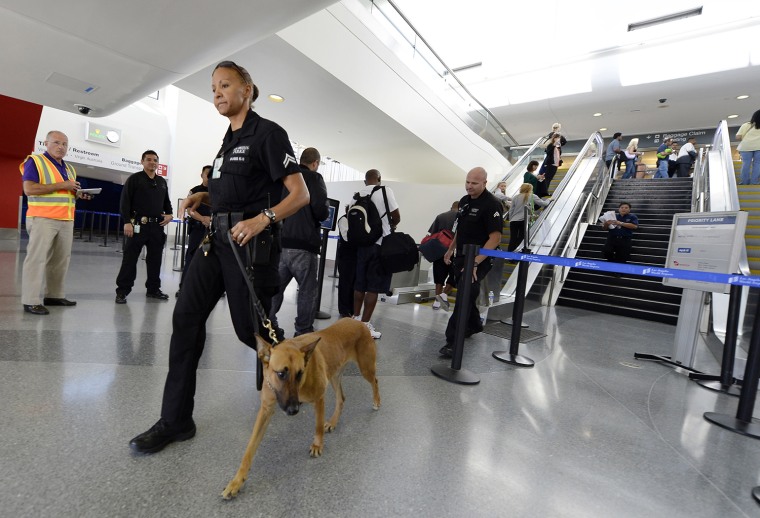Just one week after the tragic shooting that killed an on-duty Transportation Security Administration employee, the nation's airport officials and the TSA remain embroiled in a dispute over the agency's decision to stop staffing exit lanes at airport security checkpoints by the end of the year.
In April, the TSA ordered airports to take over monitoring the exit lanes in early 2014, saying the agency does not consider exit lanes part of its screening function.
Transferring that task to airports would allow the agency “to focus on the priority of screening passengers and baggage” and cut $88.1 million a year from its budget, said TSA spokesman Ross Feinstein.
However, the idea doesn't sit well with many airport authorities and industry trade groups who charge the agency with shirking duties, ignoring input and rushing in a plan that will add millions of dollars to airport operating budgets.
“Our position is quite simple: We believe first and foremost that exit lane monitoring is the responsibility of the TSA,” said Keith Brune, director deputy of operations and facilities at Philadelphia International Airport. He estimates that taking over staffing of the airport's exit lanes could cost the airport up to $3 million a year.
Public areas near airport checkpoints “are nearly as vulnerable as any other public place,” said Jeff Price of Leading Edge Strategies, an aviation management training and consulting company.
In the Nov. 1 shooting at Los Angeles International Airport, authorities believe the suspect may have entered the secure area of the airport through a gateway normally used by travelers exiting the terminal.
And in early January, 2010, a man breached the exit lanes at Newark Liberty International Airport so that he could kiss his girlfriend goodbye. The TSA shut down one of the airport’s terminals for three hours, stranding thousands of passengers, and the man was later located and arrested.
Many airports now have petitions filed with the TSA asking for a reconsideration of the exit-lane ruling. Others are working with their congressional delegations in hopes of having the ruling rescinded or delayed. And some are considering filing or joining lawsuits.
“It’s something we didn’t want to do, but TSA’s plan will end up costing us about a million dollars per year,” said Patrick Hogan, spokesman for Minneapolis-St. Paul International Airport.
The TSA currently staffs exit lanes at about a third of the nation’s airports. Other airports either staff the lanes themselves or, in some cases, share the responsibility with the TSA. A few, including Seattle-Tacoma International, Philadelphia International and McCarran International Airport in Las Vegas, have begun installing some unmanned, automated exit lanes.
If the TSA’s exit-lane plan is implemented, “it will result in the closure of exit lanes at McCarran International Airport,” said Rosemary Vassiliadis, director of aviation for Clark County, Nevada. Others airports may offer fewer exit lanes per concourse as well, resulting in a longer walk for some passengers to reach the baggage claim or the curb.
But at most airports the only outward change passengers might notice “is that the person staffing the exit lane may be wearing a different uniform,” said Mark Crosby, chief of public safety and security at Portland International Airport.
“Ultimately, though, it will be passengers who will pay,” for the change, said Price.
“Airports don’t have the cash to absorb the cost of staffing the exit lanes. So passengers might see higher parking fees or higher prices at the concessions. The changes may seem subtle, but they will be there.”
Harriet Baskas is the author of seven books, including Hidden Treasures: What Museums Can’t or Won’t Show You, and the Stuck at the Airport blog. Follow her on Twitter at @hbaskas.
